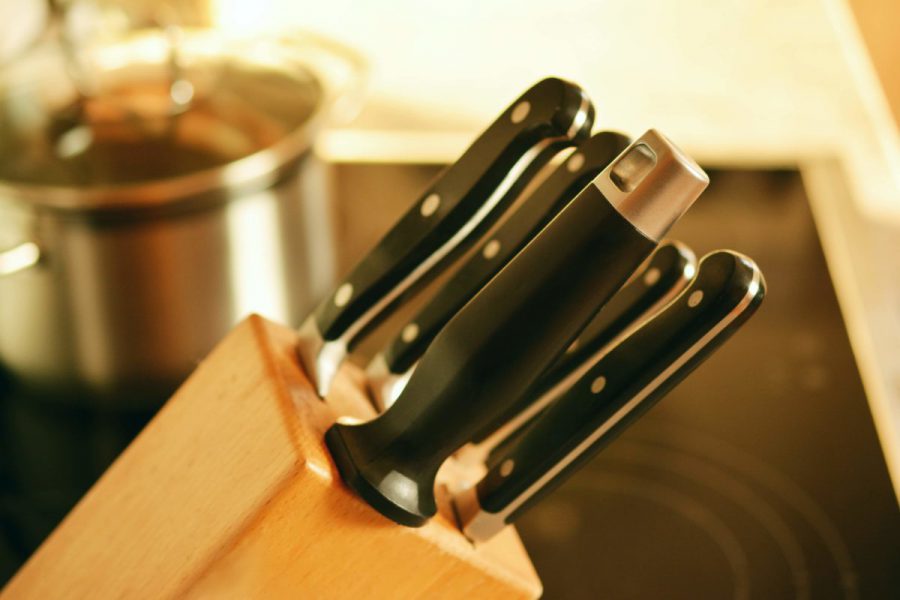Knives may seem like a simple enough kitchen tool. After all, we all use them. We purchase them. We cut with them. Occasionally we sharpen them. But the knife and knife sharpener world has a whole vocabulary unto itself—and if you don’t speak it, you’ll quickly be left behind when trying to maintain your professional kitchen equipment.
So we’re dropping the veil on our favorite kitchen tools to give you the know-how to accurately understand your knife, and to de-jargonize the use of your kitchen knife sharpener.
So without further ado, here we go:
Knife sharpening and knife terminology
- Bevel : The part of the blade that tapers or angles down into the edge. The bevel improves the strength and sharpness of the cutting edge.
- Burr : The metal edge or thread that forms on the opposite side of the knife while sharpening. Forming a burr shows that you’ve ground one side of the blade down to a sharp cutting edge.
- Controlled-Angle System (AKA Sharpening Guide) : This knife sharpener feature provides a notch, or angled guide, that keeps the knife steady as it’s being sharpened. This creates the most consistent bevel and sharpest edge.
- Corundum : Abrasive particles made of man-made diamonds. These particles aren’t as smooth as natural diamonds, and tend to have uneven hardness. Corundum tends to be darker than the clean, bright look of natural diamond particles. It’s generally cheaper than real diamond wheels and diamond sharpening steels because it lacks particle purity and consistent sizing, which results in scratched knives and less-than-professional sharpening results.
- Edge : The very bottom portion of a blade that does the cutting.
- Diamond : An abrasive used for sharpening knives. Diamond dust is usually embedded into a sharpening wheel or a sharpening steel. The best diamond abrasive is made with evenly-sized, natural diamond particles to ensure the most consistent sharpened edge, and prevent scratches.
- Grit : The size of the abrasive particles used on a sharpening device. The smaller the grit number, the courser the abrasive. The larger the number, the finer it is.
- Rockwell Scale : The measurement scale used to describe the hardness of different elements. Steel is designated by C, and its hardness is designated with HRC and a number ranging from 1 to 72 degrees. A higher number designates harder steel.
- Sharpening : Filing a small amount of metal away from a dulled bevel to recreate a sharp cutting edge.
- Sharpening Angle : The angle a knife must be held at during sharpening. This is usually relative to the sharpening wheel or stone.
- Sharpening Steel : A metal, ceramic or diamond-embedded rod used to realign the burr. Despite the name, it doesn’t actually sharpen the knife, as it doesn’t remove any metal from the edge. Realigning the burr keeps the knife sharper between sharpenings.
- Sharpening Wheel : A wheel or disk made of an abrasive to file and sharpen a knife’s bevel. They are often made of sharpening stones or embedded with diamond particles.
- Spine : The top edge of the knife.
- Swarf : The tiny metal filings that result from sharpening a knife.
- Tang : The part of the knife that is covered by the handle. A full tang knife has a blade that extends all the way through to the end of the handle, making it more durable than a half tang knife.
Now that your jargon headache is all cleared up, follow us on Facebook for more savvy tips and knife tricks to enhance your knife-wielding profession.


